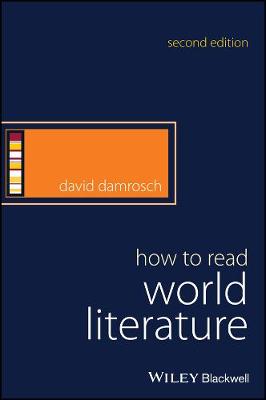
Stock image for illustration purposes only - book cover, edition or condition may vary.
How to Read World Literature
David Damrosch
€ 30.06
FREE Delivery in Ireland
Description for How to Read World Literature
Paperback. Series: How to Study Literature. Num Pages: 224 pages. BIC Classification: DSB. Category: (P) Professional & Vocational. Dimension: 229 x 152. .
The new edition of this highly popular guide, How to Read World Literature, addresses the unique challenges and joys faced when approaching the literature of other cultures and eras. Fully revised to address important developments in World Literature, and generously expanded with new material, this second edition covers a wide variety of genres - from lyric and epic poetry to drama and prose fiction - and discusses how each form has been used in different eras and cultures. An ideal introduction for those new to the study of World Literature, as well as beginners to ancient and foreign literature, ... Read more
The new edition of this highly popular guide, How to Read World Literature, addresses the unique challenges and joys faced when approaching the literature of other cultures and eras. Fully revised to address important developments in World Literature, and generously expanded with new material, this second edition covers a wide variety of genres - from lyric and epic poetry to drama and prose fiction - and discusses how each form has been used in different eras and cultures. An ideal introduction for those new to the study of World Literature, as well as beginners to ancient and foreign literature, ... Read more
Product Details
Publisher
John Wiley & Sons Inc
Format
Paperback
Publication date
2017
Series
How to Study Literature
Condition
New
Weight
28g
Number of Pages
216
Place of Publication
New York, United States
ISBN
9781119009252
SKU
V9781119009252
Shipping Time
Usually ships in 4 to 8 working days
Ref
99-2
About David Damrosch
David Damrosch, PhD is Ernest Bernbaum Professor of Literature at Harvard University and a past president of the American Comparative Literature Association. Dr. Damrosch has written widely on comparative and world literature, and his work has been translated into an eclectic variety of languages, including Chinese, Estonian, Hungarian, Turkish, and Vietnamese.
Reviews for How to Read World Literature
